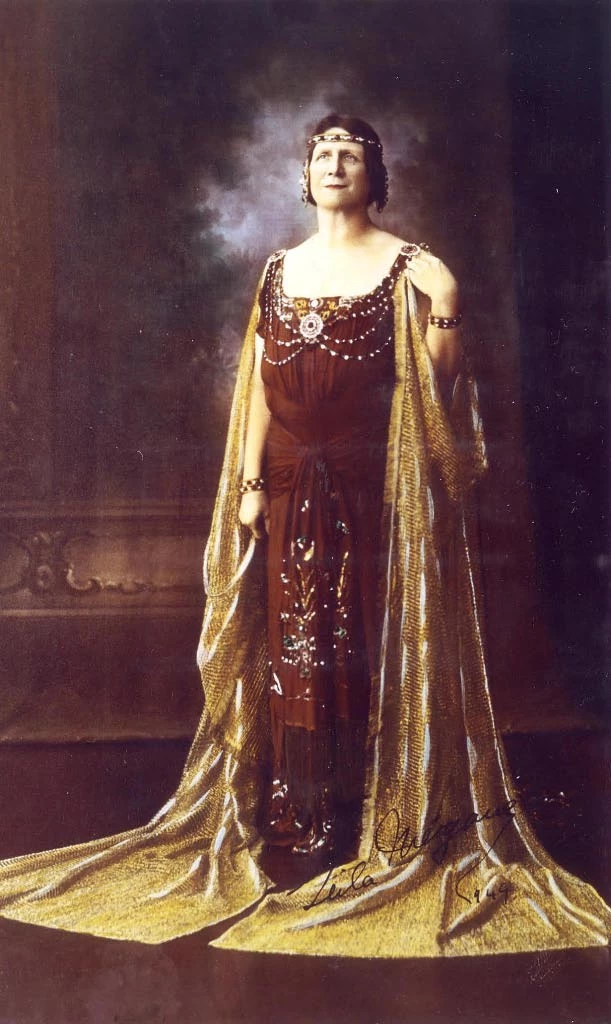A Night at the Opera: The Gown of Madame Leila Megàne
, 23 June 2015
On 7 July 2015, here at St Fagans, students from the Royal Welsh College of Music and Drama will perform a series of 5 operatic arias inspired by the story of St Fagans Castle during the First World War, as part of MAKE AN ARIA.
Unlike today, early twentieth century Wales was not considered a hotbed for operatic endeavour, musical Wales was associated with male voice choirs, brass bands and eisteddfodau.
One report on the subject of opera from 1910 even went so far as to say:
It has been frequently said that really good music is not appreciated by the people of Wales, for whom erotic musical comedy represents their highest tastes. Carmarthen Journal and South Wales Weekly Advertiser, 4 February 1910
Another newspaper reported a few years later:
The opera is of the theatre, and Wales still has its prejudice, I do think that Wales misses much by this attitude of aloofness…Wales has no further to go in choral singing. What we have to do now is to launch out, to widen our horizon. Cambrian Daily Leader, 11 April, 1913
However, on the global, cosmopolitan opera scene of the early decades of the century, there was one Welsh name on everyone’s lips, the mezzo-soprano, Madame Leila Megàne, known to her friends and family as Margaret Jones. Born in Bethesda in 1891, later to live in Pwllheli and Caernarfon, her roots were firmly planted in Wales.
She was trained in London and Paris before the First World War and later joined the company of the Grand Opera and toured extensively with them. For the Grand Opera’s production of Samson and Delilah in 1919 a new gown was commissioned for Leila. Before her death she gave the gown and its accessories to St Fagans National History Museum. As seen in the picture, the gown is a vivid orange with elaborate embroidery of purple, red, green and yellow.
The dress was made by Marie Muélle, arguably one of the best theatrical costumiers of the time. It was Muélle who made the iconic Ballets Russes costumes designed by the legendary artist Henri Matisse in 1920.
The New York Times reported in 1915:
Muélle was known to every singer and every other stage favourite, too, who wants a distinctive Paris costume in which to create a new role. The New York Times, April 25, 1915.
Following the war, Leila returned to Pwllheli to perform at a special victory concert, much to the excitement and delight of the town. According to the newspapers of the time, the residents of Pwllheli were in such admiration of her that they queued eagerly for hours just to shake her hand.
Her professional career which captured the imagination of the world, was unfortunately short lived and soon after the First World War had ended she returned to Wales to live in comparative obscurity.
The bespoke Muélle gown however, remained very special to Leila throughout her life, and when she’d sing at concerts at local venues later in her life, she would always wear the dress whenever she sang arias from Samson and Delilah.
If Leila’s story has whet your appetite for opera, free tickets are now available for MAKE AN ARIA on 7 July 2015. Experimenting with opera and performance in the grounds of St Fagans Castle. An opportunity not to be missed. See What's On for further details.



Comments - (1)
Leila was my paternal Grandmother's cousin - a source of great pride for her. It would be amazing to see the gown in the flesh one day. The rest of my inherited textile family history is a lot less glamorous! Though just as beautiful - like this sampler by my maternal Great-Grandmother.